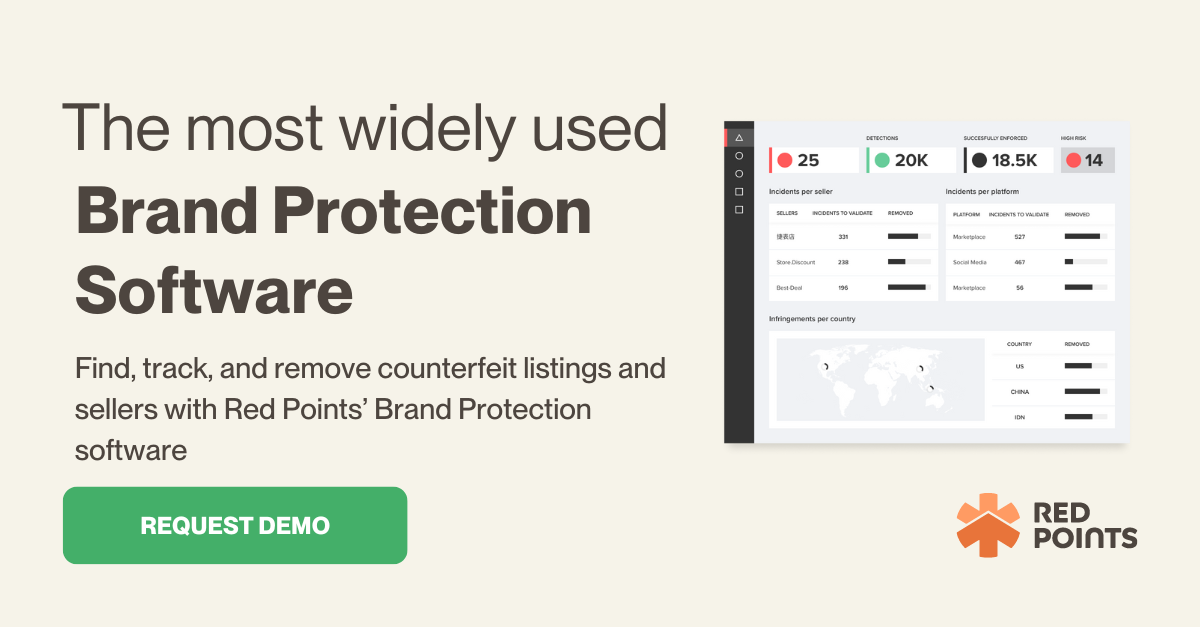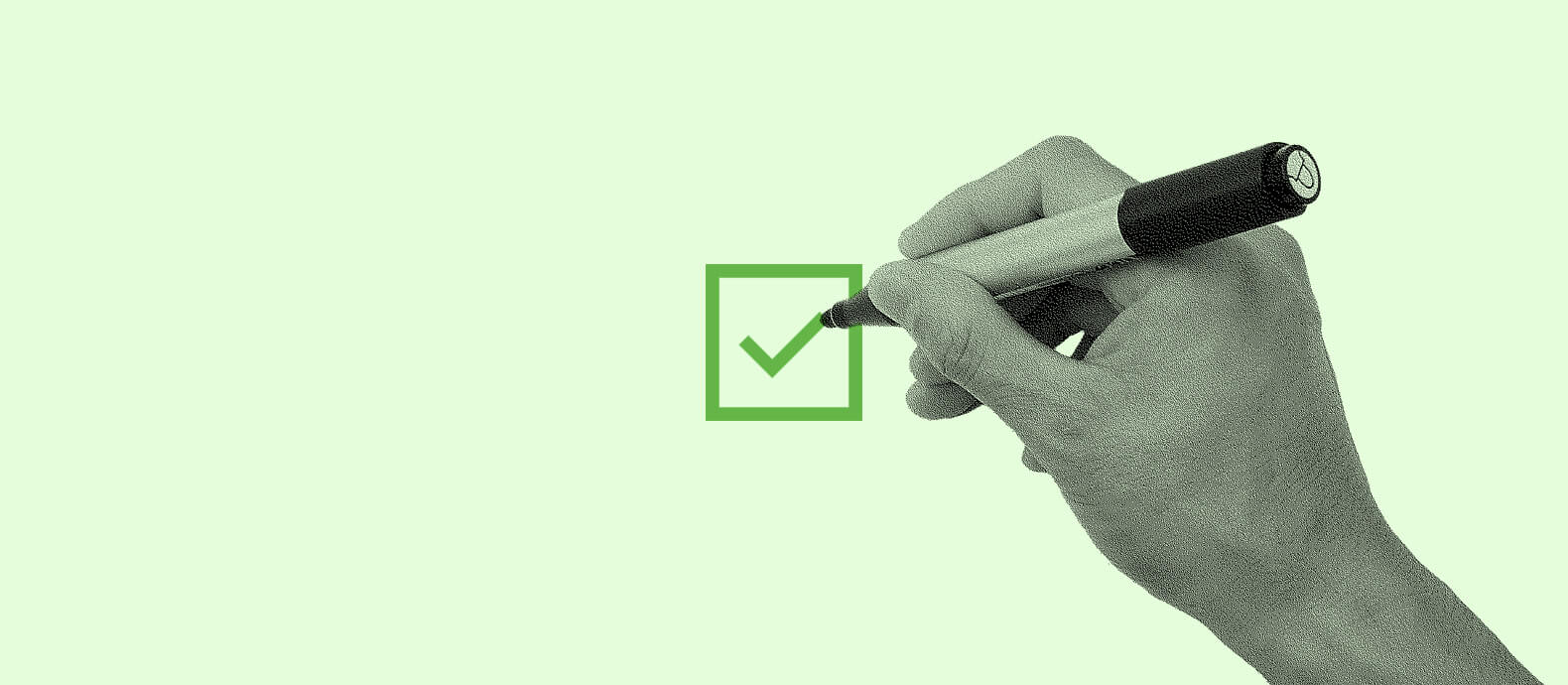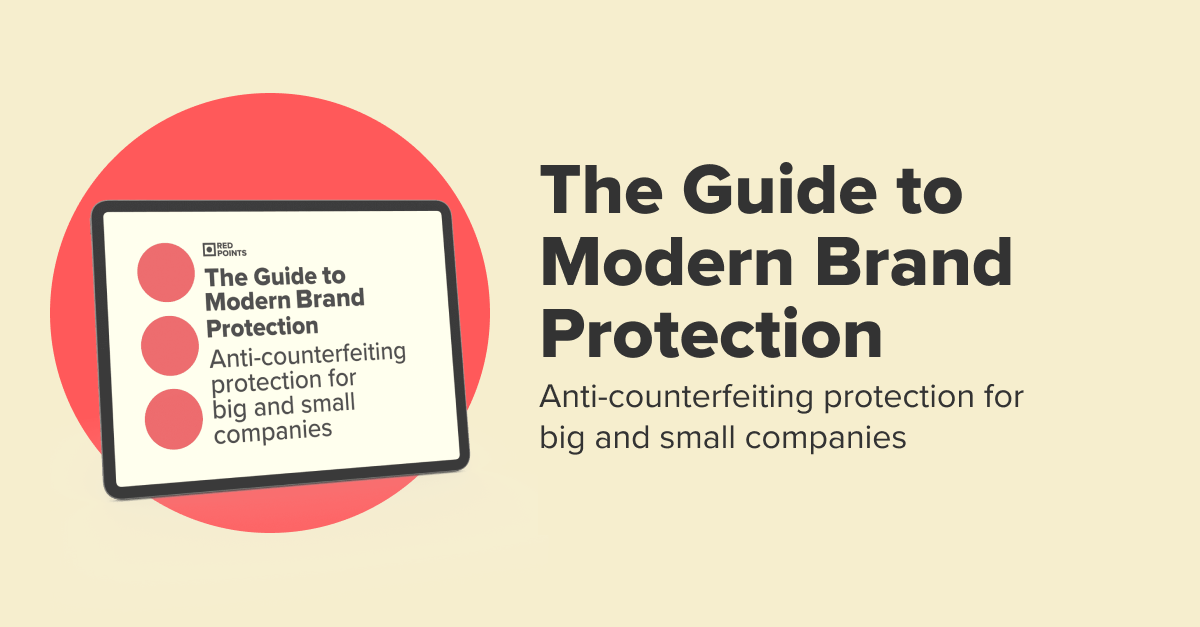Counterfeits can be found in every corner of our lives. From pharmaceuticals to alcohol, the range of products being possibly counterfeited might leave you astounded.
Sitting among all other types of infringements, counterfeit brings the most direct effect to brands. Counterfeiters sell cheap copies to stifle innovation, and steal sales and reputation. In this article, Red Points studies the techniques employed by counterfeiters and comes up with a solution checklist of anti-counterfeiting measures to support brands with their brand protection efforts.
Notice: Currency is commonly counterfeited but we will focus only on the counterfeit goods in this article.
Summary:
- An overview of techniques used by counterfeiters to evade detection
- Checklist to fight against counterfeiters
What is Counterfeiting?
Counterfeiting can be defined as the process of manufacturing goods that imitate genuine products, infringing brands’ intellectual property and names without authorization, which will destroy the image of the original brand.
While China is said to be the Mecca of counterfeit goods, they’re now being produced all around the world and the market for counterfeits is expected to hit the $4.2 trillion mark by next year.
Since branded or genuine products are often expensive, manufacturers try to lure people by making cheaper, more affordable but low-quality replicas that contain brand logos and trademarks to fool audiences.
Common products being infringed by counterfeiters include but are not limited to fashion products, baby products, sporting goods, and toys and games.
Counterfeit Evasion Techniques
Counterfeit products are sold everywhere, from physical stores to marketplaces. While there are ways to control ‘offline counterfeit’ products thanks to border protection and customs that control the inflow of counterfeit products, online sales are still booming.
Anyone can sell online. Opening a store is easier than ever, and people quickly fall for cheap and fake products due to their low prices. In fact, at times, it is not even evident that the product being sold is fake.
Here are some of the techniques manufacturers and sellers use to evade detection:
Keyword Manipulation
Brands use a variety of services and techniques to protect specific keywords such as the brand tagline or name on online marketplaces.
Counterfeiters use different tricks to sell products without using protected keywords. They use misspelled words, change the tagline a little, and often omit the brand’s name for made-up names that are easy to recognize.
Check our report to know more about how sellers describe counterfeits to attract customers.
Image Processing
A large number of people use the image search feature to find what they need on the web. This gives counterfeiters a great opportunity to win new buyers.
Since counterfeit items often look like genuine products, they may appear in search results. Plus, it is common for sellers to modify the original images found on the web and add a bunch of new elements to lure consumers.
You will find a lot of images with blurred or missing logos. Some even contain alterations in the size or color of the product. These images are usually uploaded with the seller’s contact details in a way that easily bypasses crawling automation that can only analyze written content.
Abusing New Ecommerce Features
The online shopping industry is growing thanks to better technology and more people having access to the internet. While this benefits the brand, it also helps fake sellers who use platforms and features like Facebook Shops, Walmart expansion, and TikTok’s shop now button to sell fake products.
The Instagram Story feature is among the most abused. According to a study, about 1.6 million Stories contain fake items per month. In addition to this, even influencers have been caught promoting fakes, often without knowing it.
Since stories do not remain on the page, they’re more beneficial for fake sellers due to a lower risk of getting caught.
Black Hat SEO
Black hat SEO techniques are widely used by sellers of fake products. These strategies are known to provide results within a short span of time that allow sellers to quickly make a profit.
Some commonly used techniques include domain squatting, redirecting doorway pages, and keyword stuffing.
Geo-adaptation and Geo-blocking
Offenders use geo-blocking and geo-adaptation to avoid getting caught. Some unlawful sites do not open in certain regions to avoid coming across the true owner of the brand they’re counterfeiting. In addition to this, users in a certain region may come across a totally different page that doesn’t infringe one’s rights.
Slipping Through Chat-based Payment
Sellers now use social media and chat apps to make sales. The process is simple – post an ad, negotiate over messages, show photos of a genuine product, receive payments, and send a counterfeit product.
By the time the customer finds out, it’s too late. WhatsApp appears to be the most popular option with 57% of sellers choosing it. It offers end-to-end encryption that makes it impossible to catch the culprit.
The Anti Counterfeiting Solution Checklist
Here’s what you can do to ensure your customers don’t get fooled and you continue to make more sales:
Customer Education
Customer education includes teaching people the difference between real and fake products while highlighting the disadvantages of choosing a counterfeit product.
Buyers need to know why they should stay away from fakes. It shouldn’t only be about looks. You should hit them emotionally and make relevant points, i.e.: highlight the health effects of choosing a replica as they may contain harmful chemicals.
You can post videos or guides with tips to identify fakes. Also, gives buyers the option to report fakes. This not only helps ensure more sales but also improves loyalty as it makes customers realize that you truly care for them.
Protect your IP
Always trademark your product so that you can go the legal route if you find sellers counterfeiting it. It will cost you money to trademark your products but it’s worth the cost.
Trademarks enforced through cease and desist letters and can be helpful in protecting your rights.
Not having or enforcing trademarks can cause you to lose your reputation, sales, business, and customers. However, remember that merely having a trademark isn’t enough. You should also monitor it.
Introduced on March 2, 2020, The Shop Safe Act can prove to be beneficial here. Intended to amend the Trademark Act of 1946, the Act gives ecommerce platforms contributory liability when fakes are sold.
Get in touch with a lawyer to know more about the legal options you may have in such cases.
Customs and Border Protection
Get help from Customs and Border Protection (CBP), but only offline. After all, counterfeits are not just sold on the internet. You will find some in physical stores as well.
A branch of the Department of Homeland Security, CBP allows businesses to integrate available government resources for their brand protection. The CPB can identify and stop counterfeits from crossing the border. You will have to inform the department about your rights.
Authentication Technology
Brands have many authentication technologies in place. For example, anti-counterfeiting labels are used in many CPG (consumer packaged goods) items. Some businesses use QR codes and some use different labels to help buyers identify genuine products.
Even Amazon now has an authentication policy that allows sellers to label products so that fakes can be easily identified.
Report to Marketplaces
Counterfeiters are good at dodging traditional ways. The good news, however, is that marketplaces have put in many actions to work with brands in order to take down fakes.
Brands can report to marketplaces like Amazon and Alibaba. You will have to provide proof of ownership and other details for a marketplace to take your complaint seriously.
Market Surveillance
Monitoring the internet to prevent any kind of infringement is the ultimate solution for brands. However, some specific techniques we mentioned above like keyword manipulation, image processing, and abusing ecommerce features can hardly be enforced with manual operation.
Luckily, we have an anti-counterfeiting solution to tackle them. Machine learning automatically learns and improves its keyword search capacity. It can be used to find people or pages offering fake products. Similarly, Image recognition can even detect processed images and help you catch cheaters.
This cannot be possible without the help of a reliable tool like the one offered by Red Points.
Next steps
If you are a brand owner, brand protection is the next step. Allow your brand to live up to its full potential by stopping others from benefiting from your name and ruining your image.
Red Points provides Brand Protection Services with technology. Get in touch with us today to know more.







